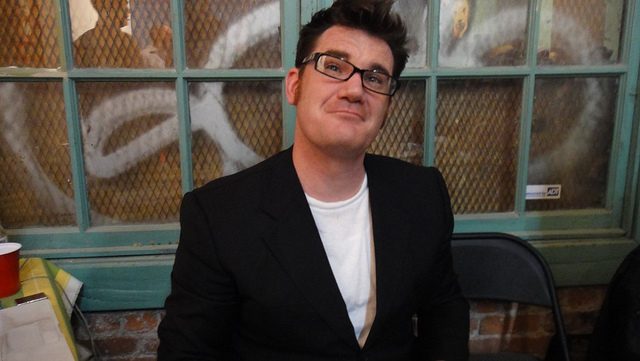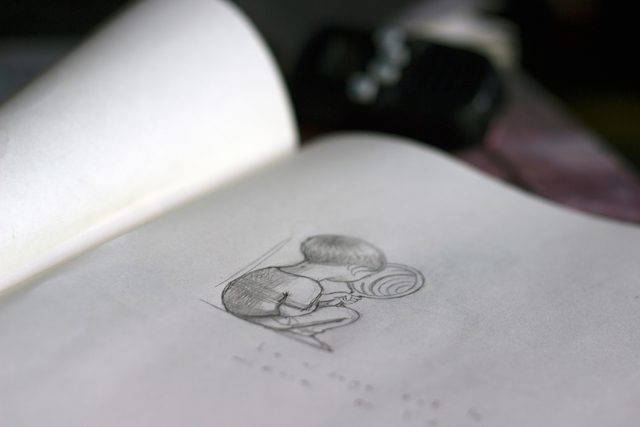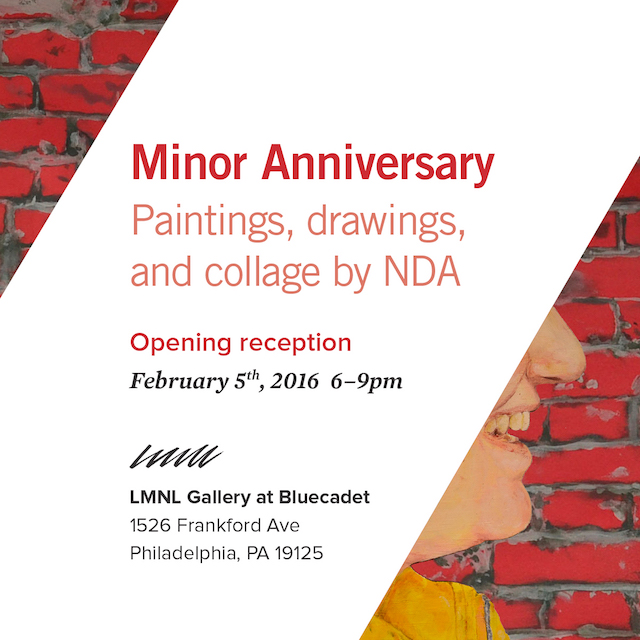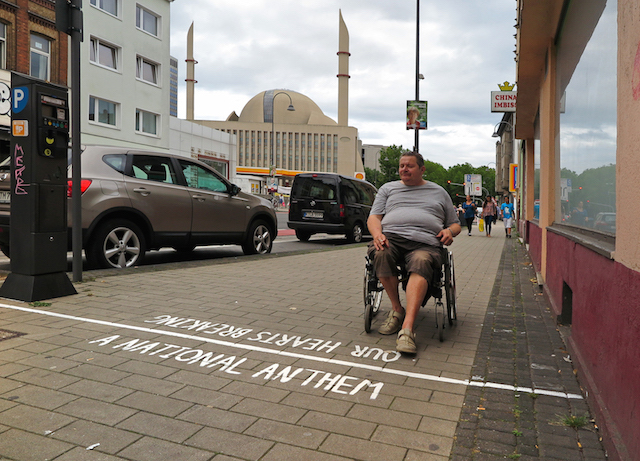
One of the most common questions I get from people outside of the street art world is some variation on “How do street artists show in galleries?”
My 30-second answer is that just as painters can sculpt and illustrators can take photos, artists aren’t restricted to just one way of displaying their work. I tell them that street artists often have a studio practice too. I tell them that what the street/studio combination looks like can vary, but sometimes the two can feed off of one another in a brilliant synergy.
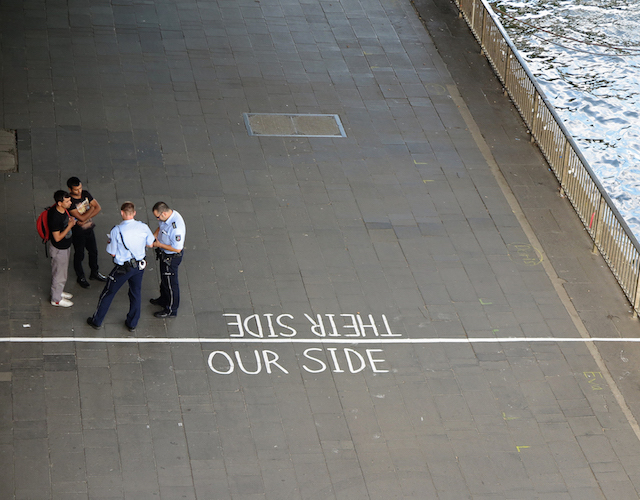
That’s a best-case scenario though, overly optimistic, which is fine when I’m being an evangelist for street art, but not quite suitable for a conversation among the already converted. We all know that the reality isn’t so cut and dry. What works for street art, what works for murals, and what works in a gallery setting are rarely the same.
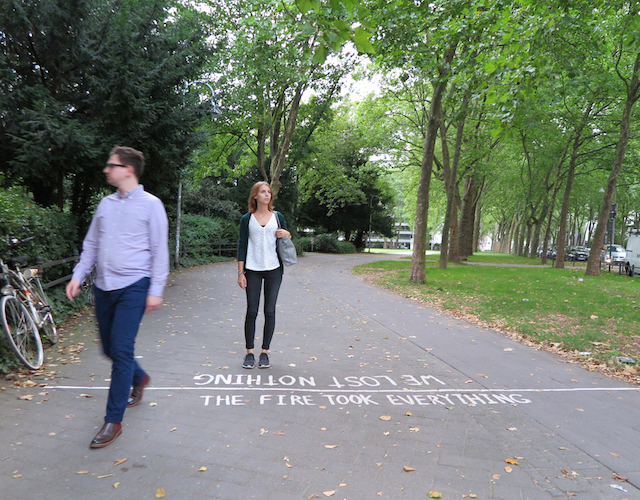
So how do you find that synergy between street and studio? I don’t have a great catchall answer, but I do have a recent example of someone getting it right.
Taking Sides, a new series from Know Hope, is one of a handful examples that I can think of where documentation of street art actually works as a piece in a gallery. It reaches a rare and coveted level of synergy between street and studio practice. For Taking Sides, Know Hope created a series of subtle street pieces in Cologne, Germany and photographed them at just the right moment. In the gallery, he paired each photo with one of the more “typical” studio works that he is best known for. As street pieces, they are solid. As photographs, they take on a new dimension. Paired with paintings, each piece in the pairing informs the other.

This approach won’t always work. That synergy isn’t as simple as putting some photos in a gallery. A photo of a mural next to a print based on that mural is going in the exact wrong direction, even though that seems to be how a lot of art is sold. It works for Know Hope (and also Barry McGee) because the photos capture something that their paintings and drawings can’t, and vice versa. That’s the key. And while I’m focusing on Know Hope today and it’s still not a catchall answer, it remains true even if the street and studio pieces aren’t literally exhibited side by side.

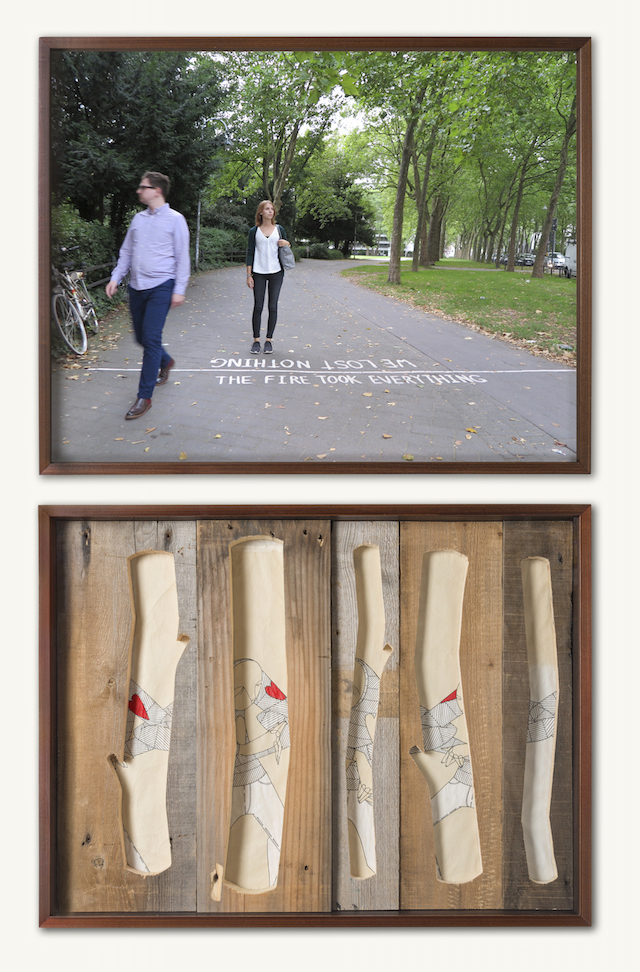
Photos courtesy of Know Hope
